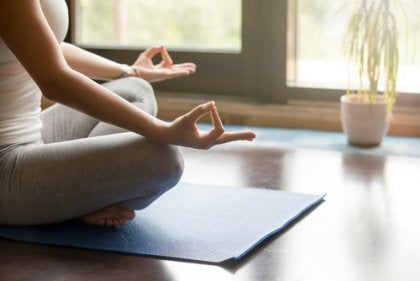Meditation Techniques for Beginners

Meditation has become quite popular. As people learn about the benefits of daily meditation, they’re becoming more interested in incorporating meditation into their daily lives. Today, we’ll share some meditation techniques for beginners that’ll help get you started on your meditation journey.
There are numerous benefits to having a daily meditation practice. It can help you reduce and correctly manage stress, improve your concentration, and increase self-awareness, among others.
Many people use meditation as a way to develop healthy habits, like keeping a positive outlook on life or self-discipline. It can also help promote healthy sleep patterns and increase pain tolerance.
As you can see, practicing meditation every day has incredible benefits for your mental and physical health. There’s so much information out there about meditation, however, that it can be hard to know where to start. We want to share these meditation techniques for beginners to make it more accessible and to motivate you to incorporate them into your daily routine.
The foundations of meditation
All meditation techniques seek to calm the mind in such a way that daily events cease to be the focus of your concentration.
They also all focus on the present moment. During meditation, you should experience the moment without becoming attached. You let each moment go so you’re free to experience the next. The idea is to stop dwelling on the past or the future.
All meditation techniques, whether they’re for beginners or advanced practitioners, increase activity in the areas of the brain linked to positive thoughts and emotions. Studies also show that practicing meditation regularly can have long-term positive effects on the brain.

Meditation techniques for beginners
In general, meditation techniques are divided into two main categories: those based on concentration and those that aren’t. Concentration-based techniques are all about focusing on a fixed point outside of yourself.
The other category focuses on things such as breathing or the internal state of your body to help you meditate. In spite of these differences, some techniques overlap.
Let’s take a look at some of the most basic options for daily meditation practice.
Basic meditation techniques
The key to letting your thoughts go is thinking of yourself as a simple observer of the things that pop into your head. You observe them when they arrive, and you let them go. Imagine that your thoughts are like clouds moving through the sky. Just watch them and don’t involve yourself with them in any way.
Start by sitting in a comfortable position. Try to quiet your mind, without forcing it. Try not to let your thoughts take charge. Once you start, you’ll realize that it isn’t easy. However, if you keep practicing, you’ll be amazed at how quickly you’ll see the difference.
Focused meditation techniques
Beginners should start with their breathing. For many people, this is much easier than concentrating on nothing, although the idea is the same. The point is to stay in the present moment and avoid becoming trapped by your thoughts.
When you try to focus on your breathing, you might find it helpful to also focus on something external. Gazing at a candle or a statue can help you keep your attention on the present moment. Something that captures your auditory attention can also be useful, such as listening to waves or the ticking of a metronome.
Mindfulness techniques
These techniques are very effective, although not always simple to master. Mindfulness is a way of staying in the present moment and resisting the temptation to project into the past or the future. Mindfulness is much easier to explain than to actually practice.
One way to practice mindfulness is to focus on your emotions and the part of the body where you feel them. The point isn’t to try to figure out why you feel a certain way. Instead, experience the emotions as sensations in your body, as if your feelings were drops of water raining on your body from the showerhead.
Activity-based techniques
Some examples of activity-based techniques are activities such as painting, gardening, yoga, or any other activity that requires concentration.
This is a kind of mindfulness that consists of using activities to boost concentration. This type of meditation is linked to flow theory or “being in the zone”. This kind of practice is great for calming the mind.

Spiritual meditation
Meditation can also be a spiritual practice, even if it isn’t linked to any particular religion. Many people use meditation as a way to gain access to their inner wisdom.
Once you’re able to slow your thoughts down, they become clearer and easier to interpret. That’s when you can ask yourself the really important questions and get more enriching answers.
All cited sources were thoroughly reviewed by our team to ensure their quality, reliability, currency, and validity. The bibliography of this article was considered reliable and of academic or scientific accuracy.
- Goyal M, Singh S, Sibinga EMS, et al. Meditation Programs for Psychological Stress and Well-Being [Internet]. Rockville (MD): Agency for Healthcare Research and Quality (US); 2014 Jan. (Comparative Effectiveness Reviews, No. 124.) Introduction. Available from: https://www.ncbi.nlm.nih.gov/books/NBK180092/
- Sharma H. (2015). Meditation: Process and effects. Ayu, 36(3), 233–237. doi:10.4103/0974-8520.182756
- Sun, Key (2011) A Simple Meditation Technique. For mental tranquility and clarity. Psychology Today
- Scott, Elisabeth (2018) 5 Meditation Techniques to Get You Started. Benefits extend beyond a calmer state of mind. Verywell Mind.
This text is provided for informational purposes only and does not replace consultation with a professional. If in doubt, consult your specialist.








